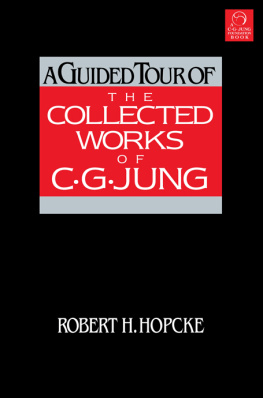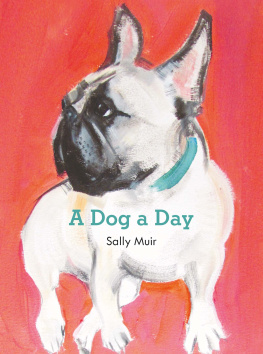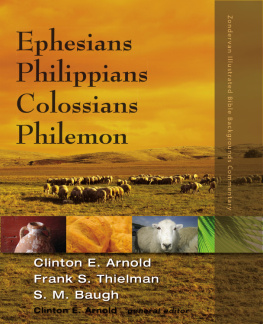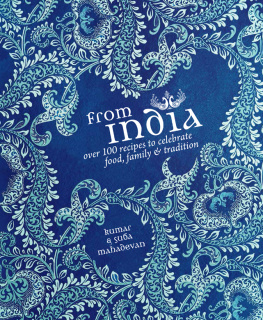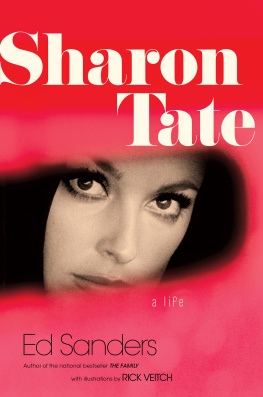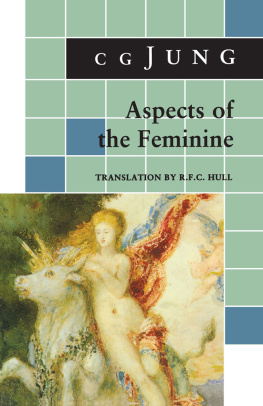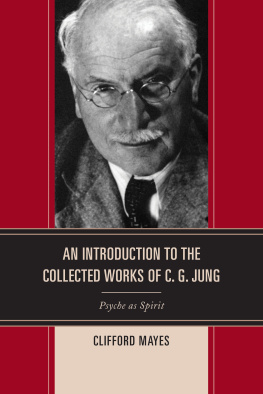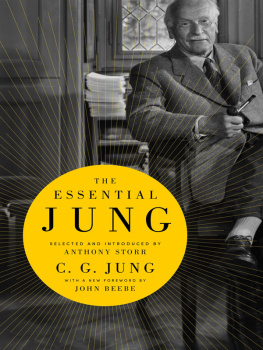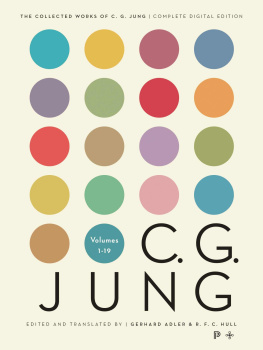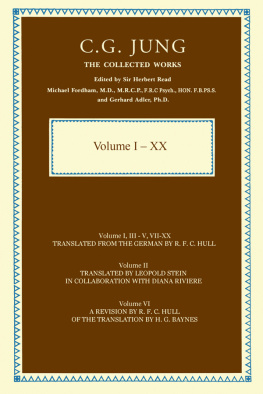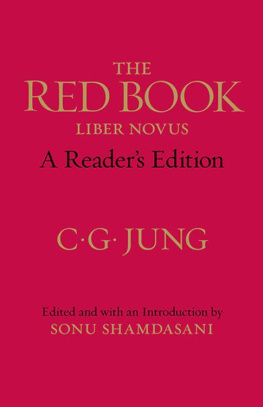The best single introduction to Jung that I have seen.
Paul Roazen, author of Encountering Freud: the Politics and Histories of Psychoanalysis
ABOUT THE BOOK
The writings of C. G. Jung himself are the best place to read about all his main ideasbut where to start, when Jungs Collected Works run to more than eighteen volumes? Robert H. Hopckes guide to Jungs voluminous writings shows exactly the best place to begin for getting a handle on each of Jungs key concepts and ideasfrom archetypal symbols to analytical psychology to UFOs. Each chapter explains one of Jungs principal concerns, then directs the reader where to read about it in depth in the Collected Works.
Each chapter includes a list of secondary sources to approach for further studywhich the author has updated for this edition to include books published in the ten years since the Guided Tours first appearance.
ROBERT H. HOPCKE is a licensed marriage and family therapist with degrees in both pastoral and clinical counseling. He is the author of numerous books, including There Are No Accidents and Living the Mysteries: The Spiritual Power of the Rosary in the Lives of Contemporary People.
Sign up to learn more about our books and receive special offers from Shambhala Publications.

Or visit us online to sign up at shambhala.com/eshambhala.

A C. G. JUNG FOUNDATION BOOK
The C. G. Jung Foundation for Analytical Psychology is dedicated to helping men and women grow in conscious awareness of the psychological realities in themselves and society, find healing and meaning in their lives and greater depth in their relationships, and live in response to their discovered sense of purpose. It welcomes the public to attend its lectures, seminars, films, symposia, and workshops and offers a wide selection of books for sale through its bookstore. The Foundation also publishes Quadrant, a semiannual journal, and books on Analytical Psychology and related subjects. For information about Foundation programs or membership, please write to the C. G. Jung Foundation, 28 East 39th Street, New York, NY 10016.
A GUIDED TOUR OF THE COLLECTED WORKS OF C. G. JUNG
ROBERT H . HOPCKE

SHAMBHALA
Boston & London
2012
TO MY FAMILY
Shambhala Publications, Inc.
Horticultural Hall
300 Massachusetts Avenue
Boston, Massachusetts 02115
www.shambhala.com
1989, 1999 by Robert H. Hopcke
All rights reserved. No part of this book may be reproduced in any form or by any means, electronic or mechanical, including photocopying, recording, or by any information storage and retrieval system, without permission in writing from the publisher.
The Library of Congress catalogues the first edition of this work as follows:
Hopcke, Robert, 1958
A guided tour of the collected works of C. G. Jung/Robert H. Hopcke; foreword by Aryeh Maidenbaum.1st ed.
pp. cm.
Bibliography: p.
eISBN 978-0-8348-2825-4
ISBN 978-0-87773-470-3
ISBN 978-0-87773-582-3 (paper)
ISBN 978-1-57062-405-6 (1999 paper ed.)
1. Jung, C. G. (Carl Gustav, 18751961). 2. Psychoanalysis.
1. Title.
BF173.j85H66 1989 88-34345
150.1954dc19 CIP
CONTENTS
While the idea for a book and its writing may belong to an author, the labor of making a book a reality could not be accomplished without a great deal of help and support. Many thanks are due to the woman who urged me to read Jung and went out of her way to enable me to do so, Dorlesa Barmettler-Ewing of California State University, Hayward; under her Swiss direction my acquaintance with the Collected Works first took place and deepened over the years. Those connected with the C. G. Jung Institute of San Francisco who have lent a helping hand are also due great thanks: Scott Wirth, Karin Carrington, Rita Cahn, Carol Tuttle, John Beebe, and Raymond Kilduff all have contributed directly and indirectly to my being able to put form to this formlessness. Joan Alpert, the June Institute librarian, and the library volunteers are to be recognized for their invaluable interest, support, and encouragement throughout the research process. Members of the Analytical Psychology Club of Berkeley, especially Celia Correa and Daniel DeYoung, have helped me understand Jung more clearly and in a more immediate way through being able to share our own inner lives with each other in the course of numerous discussions. The folks connected with Shambhala Publications, without whom this book would never have been, I acknowledge with much gratitude and affection: Kimn Nielson, Jonathan Green, and Emily Hilburn Sell all share in the midwifery of this volume. Finally, those with whom I share my life are to be congratulated for bearing with me and providing a place of rest, relaxation, and fun in the midst of the sometimes grueling work this book entailed: Gery Short and Roseann Alexander, Mark Castillo and Jennifer Diaz, Dan Fee, Jill Johnson, and, with much love, Paul Schwartz.
This book is written in response to many stimuli, some personal, some collective. On the personal level, I find myself in a number of roles as practicing psychotherapist: healer, teacher, supervisor, mentor, writer, reader, patient in analysis, and analyst of others. In nearly all of these roles I have been exposed to what one might call a groundswell of interest in the writings of C. G. Jung. My clients are interested in Jungs ideas and find Jungian-oriented dream work both challenging and nourishing. My students in workshops and case seminars want to know more about Jungs theories on subjects not usually associated with Jungian thought, such as homosexuality, narcissism, object relations and developmental theory, group therapy. My supervisees pump me on the uses of Jungs more practical concepts in their work with their clients, for example, his theory of psychological types, his methods of dream analysis, his understanding of spiritual growth.
Others in the field know of my interest in Jung through my writing and ask me for elucidation of some of his more difficult concepts such as synchronicity, the nature of the archetypes, the Self. I attempt to read as much as possible in the ever growing literature on Jungs ideas, and my reading stimulates my writing as I discover new connections in Jungs thought by filtering his thought through my experience. Again and again I find myself using Jungs conceptions to make sense of my actions and interactions with others, my shadow projections, my complexes, my alluring archetypal images.
On the collective level, the reasons that Jung and his writings have become more interesting to more people than ever before are open to conjecture. Perhaps psychology as a field is not so keenly gripped by its inferiority complex as a natural science and so the field no longer needs to prove itself through a slavish devotion to rationality. The waning of Freudian psychoanalytic influence and the increasingly irrelevant aridity of experimental psychology seem to be twin results of an awareness that psychology as rational science, as an objective and impartial body of knowledge, is a myth. The threat of global extinction, one result of this myth of rationality, may have at last forced upon human beings an inward turn of the intellect, a penitential soul-searching, in order to understand ourselves and find the courage and hope we need to survive our own aggression. And let us not forget the patent symbol of the millennium that forces a certain pervasive consciousness of what it means to be human. At such a juncture, Jung and his work on the meaning and purpose of myths would appear useful in finding the necessary way forward, the
Next page
